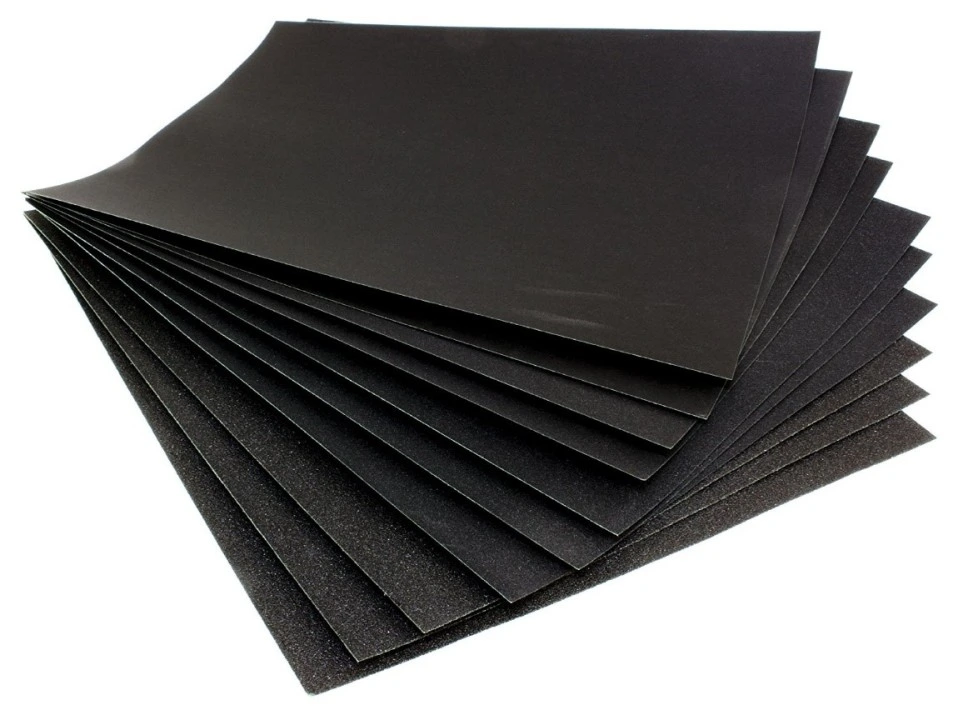Abrasive papers are widely used in various industries and applications for sanding, polishing, and finishing surfaces. These papers are made with different types of abrasive grains, each offering unique properties and capabilities. The quality and type of the abrasive coating largely depend on the quality and type of the abrasive material. These abrasives determine the effectiveness, durability, and application of the sandpaper. In this article, we will explore the two main types of manufactured abrasive grains commonly used for abrasive papers, their characteristics, and their applications.
Aluminum Oxide Abrasive Grains
One of the most widely used abrasive grains in abrasive papers is aluminum oxide. It is a versatile synthetic abrasive known for its hardness, toughness, and durability. Aluminum oxide grains are manufactured through a process that involves melting bauxite ore and then cooling and crushing it into different sizes and shapes.
Characteristics of Aluminum Oxide Abrasive Grains
- Hardness: Aluminum oxide is a hard abrasive grain, making it suitable for grinding and sanding applications.
- Self-Sharpening: Aluminum oxide grains have a self-sharpening property, which helps maintain their cutting edges during use, ensuring consistent performance.
- Durability: It is known for its long-lasting abrasive properties, which reduce the need for frequent replacements of abrasive papers.
- Grit Sizes: Aluminum oxide abrasive grains are available in a range of grit sizes, allowing for different levels of aggressiveness and surface finishes. Coarser grit sizes are more effective for material removal, while finer grit sizes provide smoother finishes.
Applications of Aluminum Oxide Abrasive Grains
- Woodworking: They are effective for sanding and finishing wood surfaces, removing imperfections, and preparing them for painting or sealing.
- Metalworking: Aluminum oxide grains are used for grinding and polishing metal surfaces, providing desired tolerances, surface finishes, and edge preparations.
- Automotive: They are employed for refinishing automotive bodies, repairing paintwork, and preparing surfaces for adhesion.
- General Purpose: Aluminum oxide abrasive grains are also used in general-purpose abrasive papers for sanding and finishing various materials, including plastics and composites.
Silicon Carbide Abrasive Grains
The second main type of abrasive grain used in abrasive papers is silicon carbide. It is a synthetic abrasive known for its extreme hardness and high thermal conductivity. Silicon carbide grains are manufactured by heating a mixture of silica sand and petroleum coke in an electric furnace.
Characteristics of Silicon Carbide Abrasive Grains
- Hardness: Silicon carbide is one of the hardest synthetic abrasive grains available, making it suitable for grinding hard materials such as ceramics, glass, and carbide.
- Brittleness: Despite its hardness, silicon carbide is more brittle, making the abrasive grains fracture more easily and provide a sharper cutting edge over time.
- Thermal Conductivity: Its high thermal conductivity allows for efficient heat dissipation during the sanding process, reducing the risk of overheating the material.
- Sharp Cutting Edges: Silicon carbide grains have sharp cutting edges, allowing for efficient material removal and precise surface preparation.
- Grit Sizes: Silicon carbide abrasive grains come in various grit sizes, providing options for different levels of aggressiveness and surface finishes.
Applications of Silicon Carbide Abrasive Grains
- Stone Polishing: They are effective for polishing and honing natural and engineered stone surfaces, achieving desired finishes and smoothness.
- Glass Grinding: Silicon carbide grains are used for grinding and shaping glass surfaces, providing precise and smooth results.
- Ceramics and Hard Materials: They are employed for grinding and finishing ceramic components, hard metals, and other challenging materials.
- Electronics: Silicon carbide abrasive grains are used in the electronics industry for precision grinding and lapping of semiconductor materials.
Conclusion
Abrasive papers are essential tools for sanding, polishing, and finishing surfaces in various industries. The two main types of manufactured abrasive grains used in abrasive papers are aluminum oxide and silicon carbide. Aluminum oxide grains offer hardness, toughness, and self-sharpening properties, making them suitable for various applications in woodworking, metalworking, and automotive industries. On the other hand, silicon carbide grains provide extreme hardness, sharp cutting edges, and high thermal conductivity, making them effective for grinding and shaping hard materials, stone polishing, glass grinding, and electronics applications.
